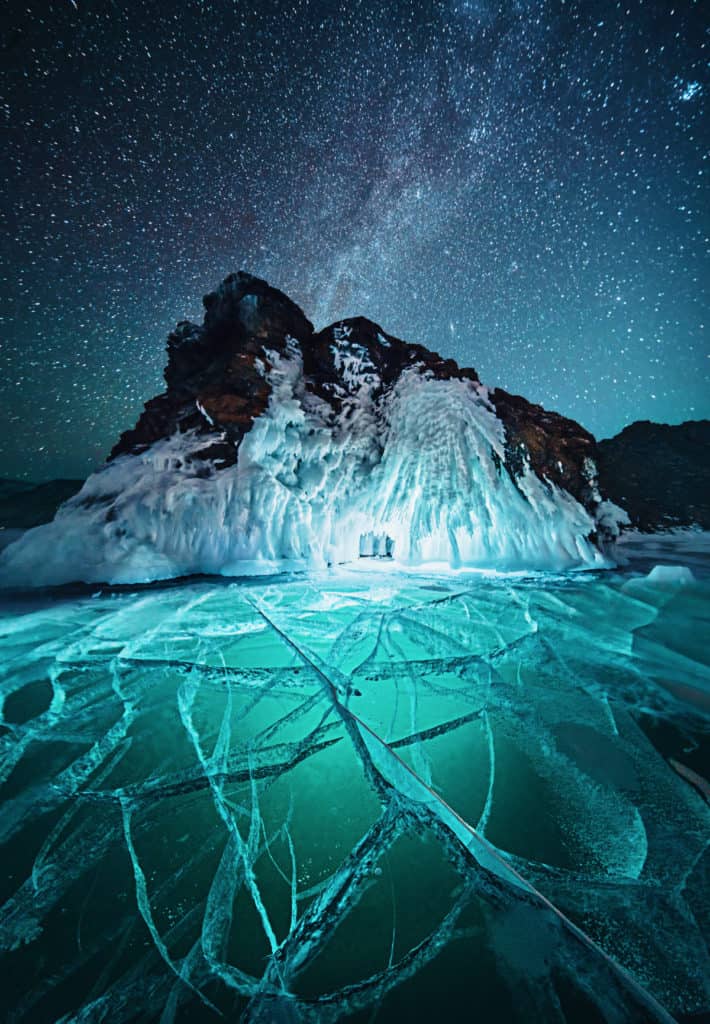
Lake Baikal. Photo by Kristina Makeeva
It’s -5F/-21C in Madison, WI this morning. Oh, and it’s snowing, thus proving that it’s never too cold to snow. Many of us are spending another weekend off the ice. Why not get your ice-science geek on and read DN sailor Ken Smith’s article about ice’s magical properties and learn about peel-outs.
WHY ICE WORKS
Push your boat over ice, and it slides almost friction-free. Why is there no friction? Because ice is magic. Ice floats on water.
Professor, explain why runners are almost frictionless on ice? Well, pilot, most materials live by phase diagrams that display what pressure and temperature does to the material “phases,” liquid, solid and gas. Take a gas, put it under pressure and it becomes a liquid. Take a liquid and put it under pressure and it becomes a solid. Works for lava. Works for steel, works for most anything that has a liquid state. It works for water, too. The magic stuff, ice will become water (or slush) if it gets above 32 degrees F, 0 degrees C. But there is a special condition found in ice where the phase transitions are a little wacky. This wackiness means the solid is less densethan the liquid. Ice floats. Stay with me here.
Continue reading in the February 2021 edition of the DN class newsletter, Runner Tracks, page 8.


